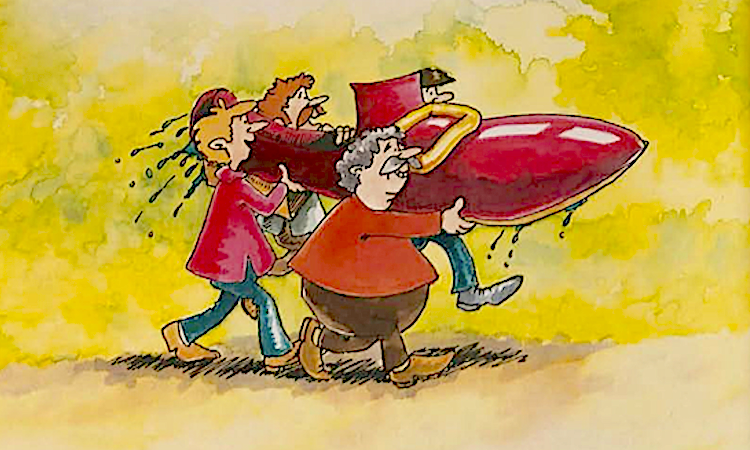By Beth Richards, Literacy Interventionist, Reading Recovery Teacher, Guest Blogger
Today's blog post is the second part of a post written to help you decide on the most important teaching decisions you can make with students who are reading at levels G–I. Keep reading for details of what to keep an eye out for, which I've listed in the first part, with guidance on how to effectively respond to students.
Visually Searching the Entire Word
 At this level, students can no longer be satisfied with an integrated response. They must search beyond the first letter or first part to check and make sure they see the rest of the sounds that go along with their prediction. In a narrative text like
Hungry Giant's Shoe
, there are several opportunities for students to check the entire word and make sure their prediction is correct.
At this level, students can no longer be satisfied with an integrated response. They must search beyond the first letter or first part to check and make sure they see the rest of the sounds that go along with their prediction. In a narrative text like
Hungry Giant's Shoe
, there are several opportunities for students to check the entire word and make sure their prediction is correct.
As Kellan read, he substituted the word ground for grass . As he finished the sentence, I replied, “That made sense. Now do a close check and see if you’re right.” One of Kellan’s goals was learning how to search the entire word to confirm his predictions. He glanced and shook his head yes, satisfied with his response. So I tried it a different way.
I passed him the dry erase board and said, “If the word was ground , what letters would you expect to see?” He took the pen and wrote g-r-o-w-n-d. Then I asked him to check and see if he saw those sounds. He quickly shook his head no and said, “It’s grass!”
It’s irrelevant that he misspelled ground ; what was important was that he started to understand the link between seeing and sound expectancy, and checking to make sure it was present. The same behavior was necessary to help him decide between hand or head , as both responses are meaningful, structurally correct, and share some visual information.
Monitoring
 Students reading at these levels should be monitoring at all times to make sure their reading is balanced, and noticing if something isn’t right. Hesitation, rereading, and multiple attempts will indicate the student is monitoring, and may alert you to what may be causing difficulties for the student. Look for patterns with the child’s monitoring.
Students reading at these levels should be monitoring at all times to make sure their reading is balanced, and noticing if something isn’t right. Hesitation, rereading, and multiple attempts will indicate the student is monitoring, and may alert you to what may be causing difficulties for the student. Look for patterns with the child’s monitoring.
Sometimes students are excellent at noticing when something doesn’t look right, but they can be less aware of when something doesn’t make sense or sound right structurally, or vice versa. This will allow you to focus your teaching and prompting on what the child is struggling with. It may also help you rethink your text selection and introductions.
If a child is having difficulty noticing when meaning is breaking down, the orientation is the perfect time to make sure the child will be focused on reading this text for meaning, and any support or prompting during reading should direct the child toward meaning. Also consider what may be happening with the text structure that is making it difficult for the child to monitor.
Final Thoughts
Even though students reading at these levels are reading more fluently and easily, they are still beginning readers. Do not be afraid to help your students during the first reading of a text. Not everything needs to be solved independently by the child. Clay cautions, “Give thoughtful attention to the level of help a child needs and decide when you are prompting for processing or when you should be supplying information which the learner does not have” (2016, 118).
Perfection is not the goal of the first read; it is to help students develop ways of noticing and working through difficulty by scaffolding them in the moment to become more independent along their reading journey.
 Beth has been teaching for seventeen years. She has taught kindergarten, third, and fourth grades in Wisconsin. For the last six years, she has been a literacy interventionist and Reading Recovery teacher and loves spending her days helping her students develop and share her love of reading.
Beth has been teaching for seventeen years. She has taught kindergarten, third, and fourth grades in Wisconsin. For the last six years, she has been a literacy interventionist and Reading Recovery teacher and loves spending her days helping her students develop and share her love of reading.




















































